Allow me to introduce you to our hardest working crew member, Auto. Particularly on the big passage across the Indian Ocean, with 30 knots of wind on a broad reach and ten to twelve foot swells on our aft quarter, Auto went above and beyond the call of duty. If I could slap Auto on the back and buy her an anchor beer, I would.
Auto gets called all kinds of names on other boats (e.g., Iron Mike, HAL, Otto, etc.), but she’s essentially the same tireless workhorse on every sailboat. (For you landlubbers reading this, think cruise control. Auto pilot is a mechanical drive that controls the angle of the rudder, which controls the heading of the boat.) While Ruud and I put in two six-hour shifts a day, Auto slaves around the clock. Our watches are largely hands-off, manual-labor-free shifts; Auto works her heart out twenty four hours a day, seven days a week. She’s also the biggest power draw when we’re underway, but given her relentless work ethic we’ll keep her juiced up.
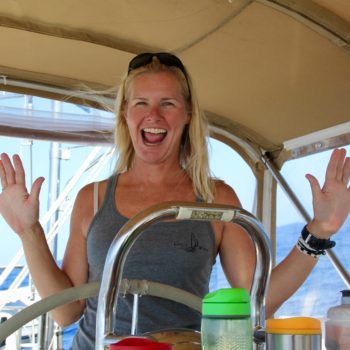
As you graduate from dinghy sailing to basic keelboat sailing to coastal cruising to ocean crossings, you look forward to gear upgrades like electric winches and furling sails. You love the feeling of a tiller in your hand, and think you’ll want to hand steer all the way around the world. You think you’re an efficient, precise helmsman. And then you meet Auto, and you wonder why the captain ever brought you aboard in the first place.
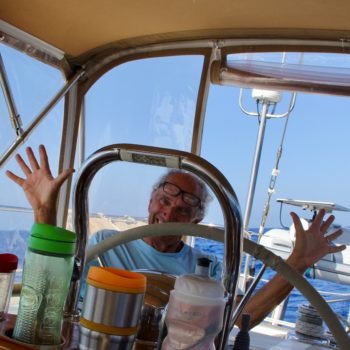
The Captain brought you on board because someone has to tell Auto what to do. There are several settings on Auto: Locked Heading, Steer to Waypoint and Windvane. The goal is to align your goals with Auto’s instructions. If you’re motoring, you need waypoint. You have a destination, and your primary goal is to motor to that destination as quickly as is safely and comfortably possible. You set a waypoint at that destination, and tell Auto to take you there. If you just set heading, Auto might take you quite far from the destination if the boat is affected by current or wind. If you’re sailing, you need windvane. You have set and trimmed the sails to handle a certain point of sail, and tell Auto to keep the wind at that angle to the boat. If you see that the set point of sail is no longer taking you to your destination, you adjust sail trim and give Auto a new point of sail to maintain. Again, if you just set heading, you would have to constantly monitor and adjust sail trim. Sometimes in big seas, heading is your only option, because Auto exerts too much effort toward adjusting for every wave that pushes you around. The future of autopilots is smart technology that learns how a particular boat reacts to different conditions and alters its steering accordingly.
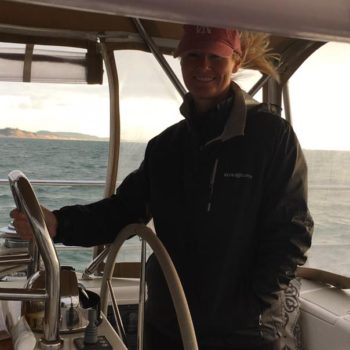
Some boats very proudly never use autopilot (purists who prefer to hand steer) or only use her when the conditions are easy (racers who can outperform Auto in bad conditions). For most cruisers, though, Auto provides precise, efficient and easy helming. Usually Auto is the most under appreciated crew member, until Auto breaks, and then your hands blister and your feet swell and your arms and shoulder and back ache from hand steering, and you wonder how sailors ever sailed before Auto existed.
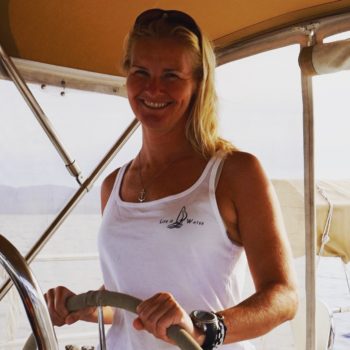
There are times when Auto is not the right woman for the job (and I only tell you this because luckily Auto is hard of hearing). Auto is very slow to respond to new instructions. If you tell Auto to adjust 10 degrees to port, it takes Auto a good minute to motivate and achieve the desired course change. And, if I realize we need to make a sudden course change to avoid an obstruction, it takes me a good minute to put Auto on standby and retain control of the helm. So in tight maneuvering situations, such as entering a harbor, navigating a narrow cut, or threading the needle through significant boat traffic or coral heads, Auto gets a breather and we hand steer. The few times I’ve had to steer in breaking waves and heavy current – Hydrogrphers Pass, Lombok Straits, Rangiroa – it took nearly all my strength to hold the helm at the desired coarse. Auto does it without breaking a sweat.
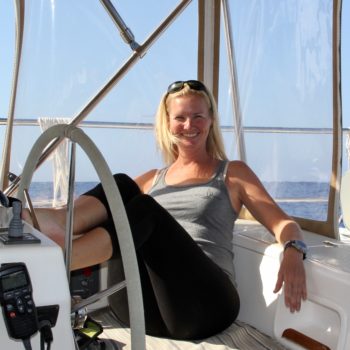
Since leaving the Caribbean nearly a year and over 15,000nm ago, I’ve only had to hand steer a single passage, and it was exhausting – a stark reminder that I wouldn’t make it around the world without Auto.

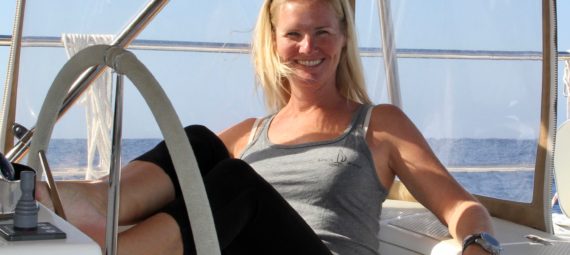
Very nicely conceived and executed!
Terrific piece Brita. I feel as if I’m on friendly terms with Auto!!
Great instructional piece for those of us who sail without Auto. Don’t get me wrong, I would in a heartbeat if I could cross the oceans like you :-)